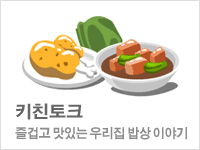요즘 대하드라마를 통해서 일본의 중세와 만나고 있습니다.
요시츠네에서는 가마쿠라 막부가 생겨나는 시기를
풍림화산에는 다케다 신겐의 젊은 시절을
그리고 공명의 갈림길에서는 노부나가가 천하통일을 위해
노력하고 있던 시기를 보고 있는 중이지요.
당연히 그 시기를 관통하는 예술에 대해서도 관심이 가서
오늘 도서관에 가기 전 짬을 내어
해금 연주를 틀어놓고 검색을 하러 들어왔습니다.
우선 나라시대의 미술에 관한 간략한 설명이 있네요.
With the spread of Buddhism in 6th and 7th century Japan, painting of religious imagery flourished to decorate the numerous temples erected by the ruling classes. However, Nara period Japan was more strongly characterized by the art of sculpture, rather than painting.
The earliest surviving paintings from this period include the murals on the walls of the temple of Horyu-ji in Ikaruga, Nara, illustrating episodes from the life of Buddha, the Bodhisattvas, and various minor deities. The style is reminiscent of Chinese paintings from the Sui dynasty or the late Sixteen Kingdoms period. However, by the mid-Nara period, paintings in the style of the Tang dynasty became very popular. These also include the wall murals in the Takamatsuzuka Tomb, dating from around 700 AD. This style evolved into the (Kara-e) genre, which remained popular through the early Heian period.
As most of the paintings in the Nara periods are religious in nature, the vast majority are by anonymous artists. A large collection of Nara period art is preserved at the Shosoin storehouse, formerly owned by Todai-ji, and now under the control of the Imperial Household Agency.

이 시기는 그림보다는 벽화를 중심으로 한 조각이 더
우세한 시기였다고요.
중국의 수,당 그리고 한국의 삼국시대와 연결되는
특히 백제와 연결되는 시기겠지요?
이 글을 읽다보니 세 나라 역사는 사실 서로 관련되는 자료로
읽어가는 것이 더 의미가 있지 않겠나 하는 생각이 듭니다.
이 벽화는 흔히 고구려 고분벽화와의 유사성이 지적되는
바로 그 벽화로군요
그 다음이 헤이안과 가마쿠라막부시대의 그림에 관한
설명인데 설명에 비해서 올라온 그림이 너무 적어서 아쉽네요.
With the development of the esoteric Buddhist sects of Shingon and Tendai in 8th and 9th century Japan, religious imagery, most notably painted Mandala became predominant. Numerous versions of Mandala, especially the Diamond Realm Mandala and the Womb Realm Mandala, were created as hanging scrolls, and also as murals on the walls of temples. A noted early example is at the five-story pagoda of Daigo-ji, a temple south of Kyoto.
With the continuing evolution of Japanese Buddhism towards the Pure Land forms of the Jodo sect in the 10th century, and important new genre was added: the raigozu, which depicts the Buddha Amida arriving to welcome the souls of the faithful to his Western Paradise. A noted early example dating from 1053 exists at the Byodo-in, temple in Uji, Kyoto. This is also considered one early example of Yamato-e Japanese-style painting, which contains representations of the scenery around Kyoto.
Panel from the Tale of Genji handscroll (detail)
Night Attack on Sanjo PalaceBy the mid-Heian period, the (kara-e) Chinese style of painting had lost ground to Yamato-e which were initially used primarily for sliding screens and byobu folding screens. However, Yamato-e also developed into new formats, (especially towards the end of the Heian period) including the emakimono hand scroll. Emakimono encompassed illustrated novels, such as the Genji Monogatari , historical works, such as the Ban Dainagon Ekotoba , and religious works. E-maki artists devised systems of pictorial conventions that convey visually the emotional content of each scene. The Genji Monogtari is organized into discreet episodes, whereas the more lively Ban Dainagon Ekotoba uses a continuous narrative illustration which emphasizes figures in active motion depicted in rapidly executed brush strokes and thin but vibrant colors. The Siege of the Sanjō Palace is another famous example of this style.
E-maki also serve as some of the earliest and greatest examples of the otoko-e (Men's pictures) and onna-e (Women's pictures) styles of painting. There are many fine differences in the two styles, appealing to the aesthetic preferences of the genders. But perhaps most easily noticeable are the differences in subject matter. Onna-e, epitomized by the Tale of Genji handscroll,
typically deals with court life, particularly the court ladies, and with romantic themes. Otoko-e, on the other hand, often recorded historical events, particularly battles.
These genres continued on through Kamakura period Japan from 1180-1333. E-maki of various kinds continued to be produced; however, the Kamakura period was much more strongly characterized by the art of sculpture, rather than painting.
As most of the paintings in the Heian and Kamakura periods are religious in nature, the vast majority are by anonymous artists.
일본역사에서 늘 언급되는 갠지 모노가타리,
한 번도 읽어보아야지 생각한 적이 없었는데
요즘에야 무슨 내용인지,어떻게 서술했을지 궁금증이 생깁니다.

아,그러고보니 겐지가 바로 요시츠네 가문의 성이로군요.
가마쿠라 막부를 세운 요리토모도 겐지이고
이복동생 요시츠네도 겐지인데 이제야 연결이 됩니다.

산죠궁전이 야습을 당한 것을 그린 그림의 일부입니다.
당시 수도인 교가 바로 교토를 말하는 것이라고 하더군요.
그런데 이미 천황의 실권은 없고 무사들의 힘이
세상을 뒤엎기 시작한 시기에 천황,혹은 천황의 아버지
법황이 머리를 쥐어짜면서 힘있는 무사들의 보호를 요청해야
하던 시기,얼마나 많은 이야기들이 존재했을까요?
다음이 무로마치 시대인데
그림이 확 달라지네요.
이 시기부터는 제대로 읽어볼 필요가 있어서
오늘은 여기까지만 보고 일어나야 할 것 같습니다.

드라마 덕분에 다시 일본사의 바다로 들어갔는데
일본 여행간 딸은 어디를 헤매고 다니면서 즐거운
시간을 보내고 있을지 갑자기 궁금해지네요.


 회원정보가 없습니다
회원정보가 없습니다